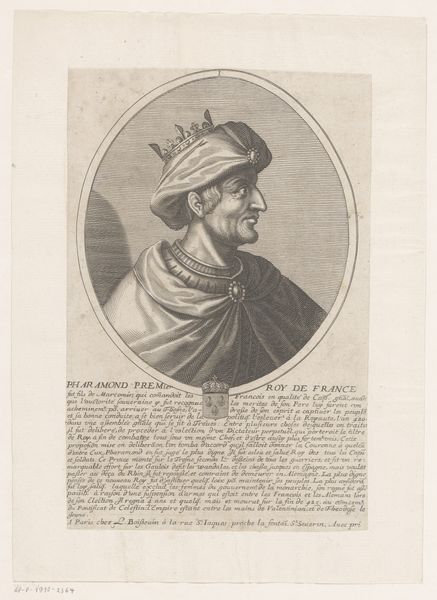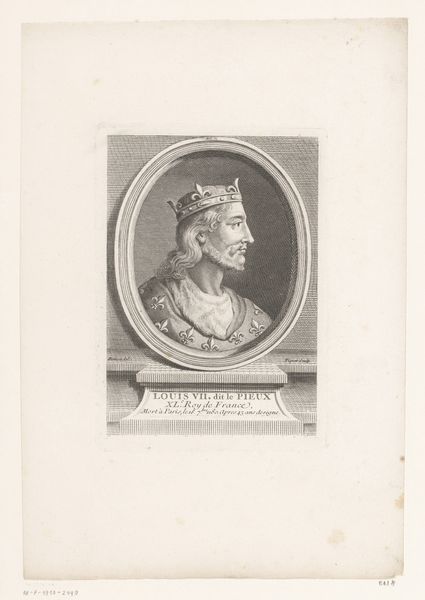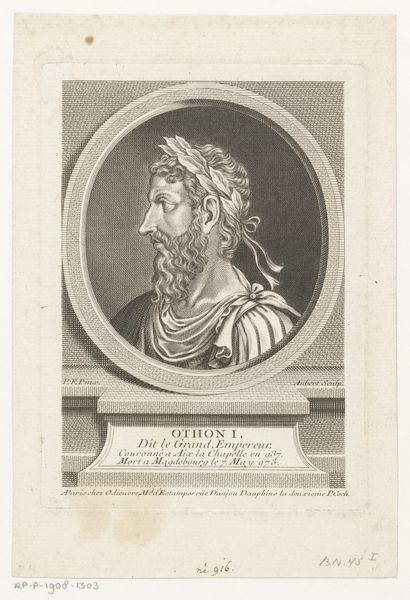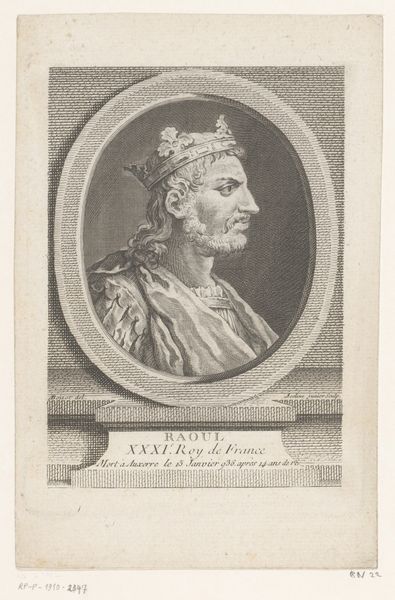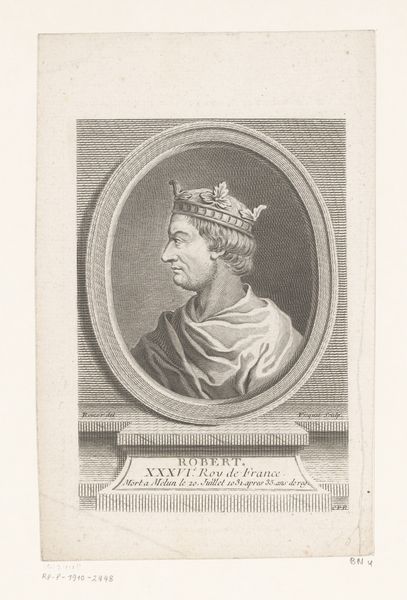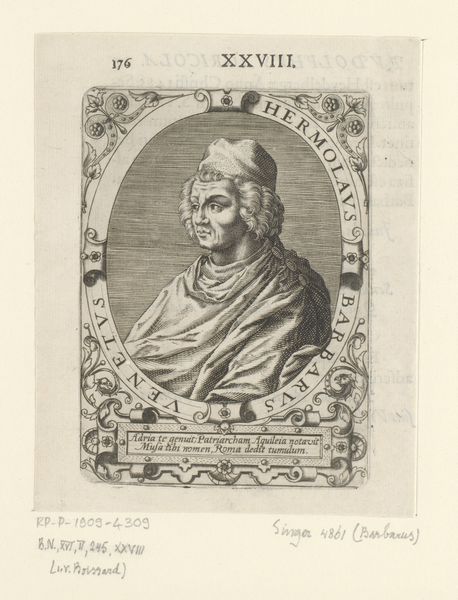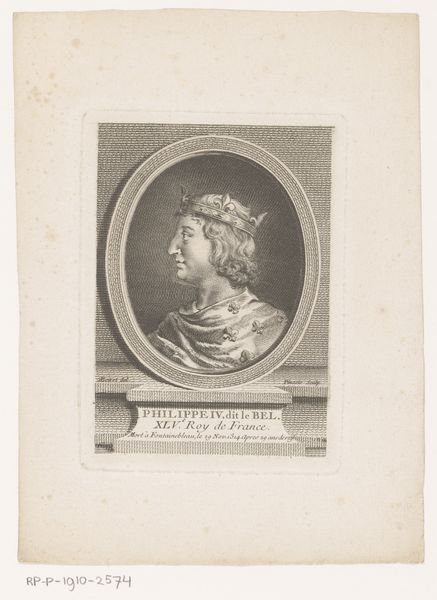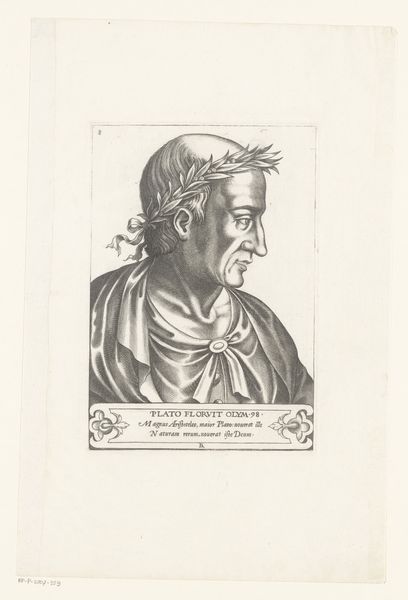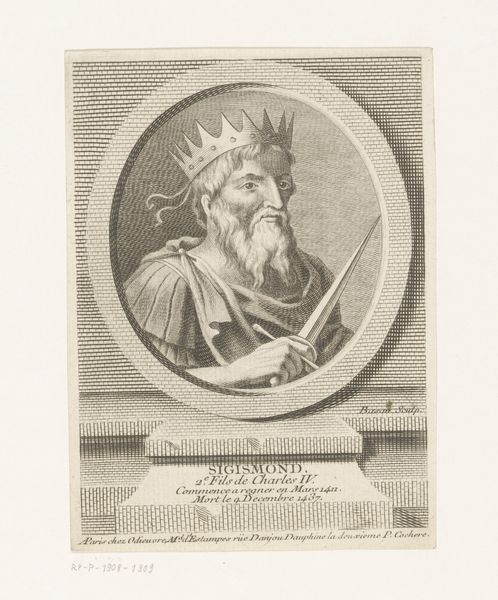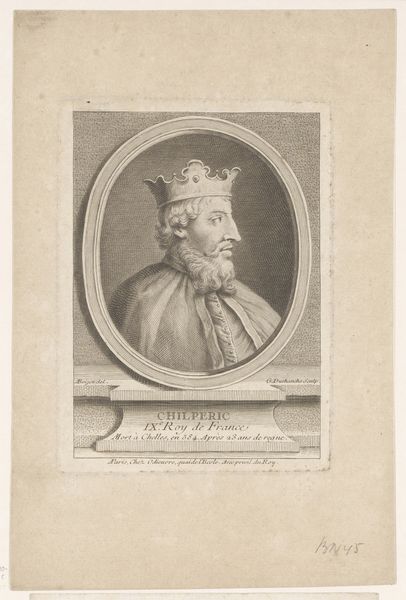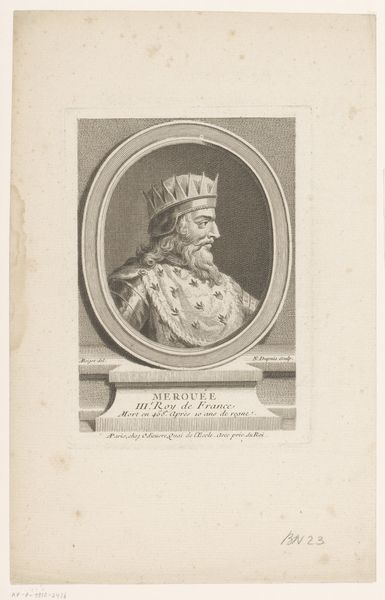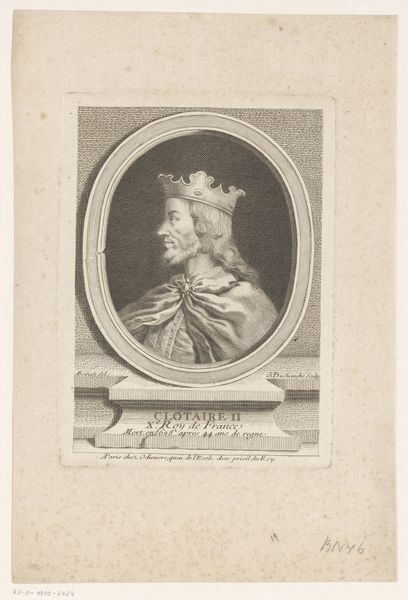
Dimensions: height 152 mm, width 114 mm
Copyright: Rijks Museum: Open Domain
Curator: Here we have Pierre Francois Basan’s "Portret van keizer Hendrik VI," an engraving likely produced sometime between 1733 and 1797. Editor: It’s remarkably crisp for an engraving. I'm struck by the precision of the lines creating texture in the face, particularly around the beard and eyes. It creates such a focused and intense gaze. Curator: The choice of portraiture as a style here elevates Henry VI. Note the baroque influences in the rendering, positioning the emperor within established visual rhetoric of power and status during Basan's era. It invokes similar depictions of rulers over the previous centuries. Editor: Yes, the profile view, encased in that perfect circle and then placed atop what resembles a classical plinth… it's all designed for maximum impact, directing us on what to look for within the artwork. The light catches the crown, ensuring that no other detail gets in the way. Curator: This image, with its inscriptions denoting his reign and death, operates on a public, almost instructional level. It reinforces established authority—interesting, given that the work appeared during a period of growing enlightenment questioning. Editor: It’s quite masterful how Basan managed to convey three-dimensional form through such delicate gradations of line. You can see it particularly in how the light hits his face versus the shadowed areas that add form and weight to it. The balance in this composition is wonderful. Curator: And in the context of art history, these prints circulated widely, impacting the perceived legitimacy, historical understanding, and authority of rulers like Henry. These are tools for cultural shaping of memory. Editor: Seeing it now, up close, I feel like I have greater insight into Basan’s capacity with engravings. I'd say the success of this work lies in the details. Curator: Indeed, it serves as a window into the evolving dynamics between art, power, and public consciousness during the late Baroque period.
Comments
No comments
Be the first to comment and join the conversation on the ultimate creative platform.
